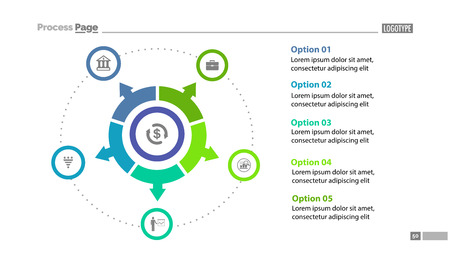Introduction to Exit Planning
For many small and medium-sized enterprises (SMEs) in the UK, the concept of exit planning often remains on the back burner until circumstances demand immediate action. However, understanding exit planning and its significance can dramatically influence both business value and personal outcomes for owners. Exit planning refers to the strategic process of preparing a business owner for the eventual transfer or sale of their company, whether due to retirement, a change in personal circumstances, or new professional opportunities. Common motivations for exit among UK SMEs include securing financial stability for retirement, responding to market changes, succession within the family, or simply seeking a new challenge after years at the helm. Early preparation is crucial; it enables business owners to maximise value, minimise disruption, and ensure a smoother transition for employees and stakeholders. Proactive exit planning also helps identify potential challenges ahead of time, allowing owners to address weaknesses and enhance operational strengths well before they become critical. Ultimately, adopting a well-structured approach to exit planning empowers SME owners across the UK to take control of their future while safeguarding the legacy they have worked hard to build.
Key Exit Strategies for UK SMEs
When it comes to exit planning, UK SMEs have several well-established routes to consider. Each strategy has distinct implications for business owners, employees, and future operations. Here, we provide a detailed overview of the most common exit strategies relevant to the UK market.
Trade Sales
A trade sale involves selling your business to another company, often within the same sector. This route is popular due to its potential for delivering immediate value and attracting buyers with strategic interests. However, it requires careful due diligence and negotiation to maximise value and ensure post-sale stability.
Advantages and Considerations:
- Potential for higher valuation if synergies exist
- Can provide a clean break for the owner
- May result in cultural or operational changes post-sale
Management Buyouts (MBOs)
An MBO occurs when the existing management team purchases the business. This option is particularly attractive when continuity is important, as managers already understand the company’s workings. Securing finance can be a challenge, but there are dedicated UK lenders and support schemes that facilitate MBOs.
Advantages and Considerations:
- Smooth transition with minimal disruption
- Keeps knowledge and expertise within the firm
- Management may require financial backing to complete the purchase
Employee Ownership Trusts (EOTs)
The Employee Ownership Trust model has gained traction since its introduction in the UK. It enables business owners to sell their company to an employee trust, giving staff collective ownership. EOTs offer significant tax incentives and foster long-term stability, aligning with growing interest in employee engagement across Britain.
Advantages and Considerations:
- No need for external buyers
- Attractive tax reliefs for qualifying sales
- Suitable for owners prioritising legacy and employee welfare
Family Succession
Passing a business down through generations remains a traditional route among UK SMEs, especially in family-owned firms. While this preserves legacy and values, it requires early planning to address issues such as inheritance tax, leadership development, and potential family disputes.
Advantages and Considerations:
- Maintains family control and continuity
- Complex succession planning needed
- Potential inheritance tax liabilities must be managed carefully
Comparing Key Exit Strategies for UK SMEs
| Strategy | Main Advantage | Main Challenge |
|---|---|---|
| Trade Sale | Pays out at point of sale; strategic buyer interest | Cultural alignment post-sale; due diligence demands |
| MBO | Smooth transition; retains management expertise | Securing finance; management capability for ownership |
| EOT | Employee engagement; tax advantages | EOT structure complexity; funding arrangements |
| Family Succession | Keeps business in family; preserves legacy | Tensions over succession; inheritance tax planning needed |
Selecting the right exit strategy depends on your long-term objectives, financial needs, and the nature of your business. Engaging early with professional advisers can help you navigate these options within the context of current UK regulations and market practices.

3. Valuation and Financial Considerations
Establishing a realistic valuation and addressing the financial aspects of your business are fundamental to successful exit planning for UK SMEs. In this section, we’ll explore practical guidance on valuing your company, preparing robust financial statements, and understanding UK-specific tax implications that may impact your chosen exit route.
Business Valuation: Setting Realistic Expectations
The first step in exit planning is to determine what your business is truly worth. There are several common valuation methods used in the UK, such as earnings multiples, discounted cash flow (DCF), and asset-based approaches. It’s crucial to select an appropriate method based on your sector, company size, and recent performance. Engaging a qualified business valuer or corporate finance advisor with local market experience can help ensure your valuation reflects current market conditions and buyer expectations.
Preparing Financial Statements
Accurate and transparent financial records are essential for attracting serious buyers or investors. Prospective purchasers will scrutinise at least three years of audited accounts, cash flow forecasts, management accounts, and detailed breakdowns of assets and liabilities. Ensure all statutory obligations—such as filing at Companies House—are up to date. Clear financial statements not only build trust but also speed up due diligence processes during negotiations.
Tax Implications Unique to the UK
Taxation plays a significant role in exit planning for UK SMEs. Owners should consider the impact of Capital Gains Tax (CGT) on any proceeds from a sale, as well as potential eligibility for Business Asset Disposal Relief (formerly Entrepreneurs’ Relief), which can reduce CGT rates if certain conditions are met. Additionally, share structuring and timing of the sale may influence your overall tax liability. Consulting with a UK-based tax advisor early in the process is strongly recommended to optimise outcomes and avoid costly surprises down the line.
Taken together, careful attention to valuation methods, thorough preparation of financial documentation, and proactive consideration of UK tax rules will put you in a strong position when navigating the complexities of exit planning.
4. Legal and Regulatory Aspects
Exit planning for UK SMEs is not just about financial considerations; it requires a thorough understanding of the legal and regulatory landscape that governs business exits. Navigating these requirements effectively ensures compliance, protects stakeholders, and minimises risks associated with the transfer or closure of a business.
Key Legal Steps in SME Exits
Whether you are selling your business, passing it on to family members, or winding down operations, certain legal steps must be followed. These typically include:
- Due Diligence: Both buyers and sellers need to undertake comprehensive due diligence to confirm ownership, assess liabilities, and ensure all information provided is accurate.
- Valuation Agreements: Arrangements for valuing the business must be formalised and agreed upon by all parties involved.
- Drafting and Reviewing Contracts: Sale and purchase agreements (SPAs), non-disclosure agreements (NDAs), and heads of terms should be carefully drafted and reviewed by legal professionals.
- Regulatory Notifications: In some sectors, you may need to notify industry regulators (such as the FCA for financial services businesses) about significant changes in control or ownership.
- HMRC Requirements: Tax implications must be assessed and addressed with HMRC, including capital gains tax, stamp duty, and inheritance tax where applicable.
Main Compliance Requirements
The UK business environment imposes several compliance obligations during an exit process. A summary is outlined below:
| Compliance Area | Description | Relevant Authority |
|---|---|---|
| Company Law | Adherence to Companies Act 2006 provisions regarding share transfers, director resignations, or company dissolution. | Companies House |
| Taxation | Proper reporting of disposals, gains, or liquidation proceeds for business owners and shareholders. | HM Revenue & Customs (HMRC) |
| Employment Law | TUPE regulations apply if staff will transfer to a new owner; redundancy processes must be legally compliant if roles are at risk. | ACAS / Employment Tribunals |
| Sector-Specific Regulation | Certain industries require notification or approval from sector regulators before finalising an exit. | E.g., FCA, CQC, Ofcom |
Contractual Arrangements: Protecting All Parties
A robust set of contracts forms the backbone of any successful SME exit. Core documents often include:
- Sale and Purchase Agreement (SPA): Outlines terms of sale, warranties, indemnities, and post-completion obligations.
- Non-Disclosure Agreement (NDA): Ensures confidentiality throughout negotiations.
- Transition Service Agreements (TSAs): Where sellers provide temporary support to buyers during the handover period.
- Schemes of Arrangement or Shareholder Agreements: For more complex restructures or where minority shareholder rights need protection.
The Importance of Professional Advice
No two SME exits are identical. Engaging solicitors, accountants, and specialist advisors early in the process can help identify sector-specific pitfalls, clarify obligations under UK law, and craft tailored solutions that reflect your unique circumstances. This proactive approach helps ensure a smooth transition while safeguarding value for all stakeholders involved.
5. Preparing Your Business for Sale or Succession
When it comes to exit planning for UK SMEs, preparing your business for sale or succession is a crucial phase that requires careful and practical action. Whether you plan to sell to an external buyer or pass the reins to a family member or key employee, making your business as attractive as possible is essential. Below, we outline practical steps to ensure your SME stands out in the UK market.
Improving Internal Processes
A business with streamlined operations is more appealing to potential buyers and successors. Begin by reviewing your current processes—everything from procurement to customer service. Identify bottlenecks, outdated systems, or inefficiencies, and implement improvements where possible. Document your standard operating procedures (SOPs) so that new owners can quickly understand and maintain business continuity. This level of organisation not only increases value but also reassures buyers of the company’s stability.
Managing Staff Expectations
Your employees are a key asset, particularly in a tight-knit UK SME environment. Open communication is vital during the exit process. Keep staff informed about the transition timeline and any changes they might expect. Offering training or professional development can also help retain key talent through the transition period. Engaged and well-prepared staff reduce risks for buyers and make your business proposition more attractive.
Due Diligence Best Practices
Due diligence is an integral part of selling any business in the UK, and being prepared can speed up the process significantly. Start by organising all financial records, contracts, compliance documents, and intellectual property paperwork. Resolve any outstanding legal or tax issues ahead of time. Conduct an internal audit if necessary to identify any areas that need attention. By presenting transparent, accurate information, you foster trust with prospective buyers or successors and avoid last-minute surprises that could derail a deal.
Final Thoughts on Preparation
Ultimately, preparing your SME for sale or succession is about building confidence—for both buyers and successors—that the business will continue to thrive post-exit. Taking these practical steps not only maximises your companys value but also ensures a smoother transition for everyone involved.
6. Post-Exit Considerations and Life After Exit
Exiting your business marks the beginning of a new chapter, often accompanied by both excitement and uncertainty. For many UK SME owners, life after exit is just as important as the planning that preceded it. Whether you are contemplating retirement, seeking fresh ventures, or considering ways to give back to your community, it is essential to approach this transition with a clear sense of purpose.
Retirement: Embracing a New Lifestyle
If retirement is your next step, take time to envision how you want to spend your days. Many find value in establishing routines, pursuing hobbies, or spending more quality time with family. Financial planning remains crucial—ensure your pension arrangements and investments align with your desired lifestyle. Consulting a local financial adviser can help you navigate UK-specific tax implications and optimise your resources for a comfortable future.
Pursuing New Ventures
For some entrepreneurs, selling up does not mean slowing down. You might be drawn towards launching another business or investing in promising start-ups. The UK’s vibrant SME ecosystem offers ample opportunities for involvement—as a mentor, investor, or non-executive director. Leverage your hard-earned experience and networks to shape new successes, while maintaining a healthy work-life balance.
Supporting Your Community
Many former business owners feel compelled to give back locally. Consider supporting charities, social enterprises, or local initiatives through volunteering or donations. Establishing a charitable trust or foundation can be an effective way to create a lasting legacy, benefitting causes close to your heart across the UK. Engaging with community groups also helps maintain strong local connections during this new phase.
Navigating Transitional Arrangements
The period immediately following an exit often involves transitional arrangements—such as consultancy agreements or phased handovers—to ensure continuity for staff and clients. Approach these with openness and flexibility, fostering trust between outgoing and incoming leadership teams. Clear communication helps mitigate disruption and strengthens your business’s reputation post-sale.
Legacy Planning: Securing Your Impact
Finally, consider how you want to be remembered within your industry and community. Formalising succession plans and sharing institutional knowledge can help preserve your business’s ethos for years to come. Legacy planning also involves thoughtful estate management—review wills and trusts regularly to reflect your post-exit circumstances and wishes.
No matter which path you choose after exiting your business, thoughtful preparation ensures both personal fulfilment and enduring positive impact—true hallmarks of successful UK SME ownership.


